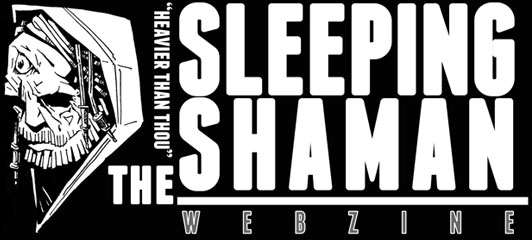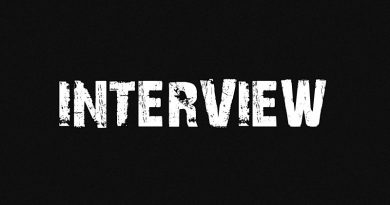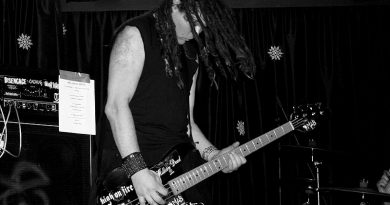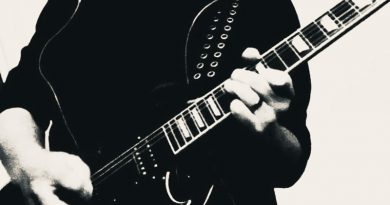In Search Of Tone: Jonathan Nuñez Of Torche & Nuñez Amplification
I’ve been a fan of Torche for a few years now and that was solidified into a lifelong fan after seeing them live in 2019. They put on a hell of a show and I was ecstatic to meet the band for just a few moments between sets. I remember Eric [Hernandez, bass] apologizing because he couldn’t stop and sign my album as he was busy, but he actually came back a little while later to find me and talk for a minute. That’s crazy haha.
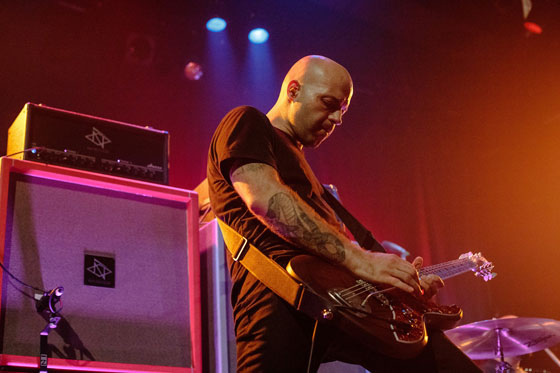
Jonathan Nuñez was kind enough to share his incredible knowledge of gear and spoke at length about what he makes and uses. He also touches on the exciting new direction Torche is heading.
I typically start these interviews with gear and ask what amps you’re currently using. We will get to that, but, I know you have you own amp company. Can you tell me a little more about that?
Yep, I have the company Nuñez Amplification. We have a few products including pedals, heads and cabinets. The pedals are definitely the consistent item that we’re selling a lot of. It gives people the opportunity to have an extremely high end pedal with all high end components, no cheap Chinese stuff. We have our components coming in from Switzerland, France, Germany, Japan, UK and US. People here, right away, are like ‘whoa’ when they plug these pedals in.
Let’s say you plug your guitar into your pedal and then into the input of the amp. You’re hearing the pre-amp tube section, or solid state section, of your head or amplifier. If you go into the effects return, that goes into the power section for both solid state and tube amps. You’re not using the knobs in the front, you go straight to the power, and the power goes straight to the speaker. People are noticing the incredible depth, detail and fullness of the pedals when running through the effects return.
they’ve used it [Tetra-Fet Drive] with affordable amps all the way to ridiculously expensive amps and the pedal works amazing…
You can also achieve an absurd amount of gain if you want it, while remaining clear and dynamic. People have been writing to me, saying they’ve used it with affordable amps all the way to ridiculously expensive amps and the pedal works amazing. This pedal, Tetra-Fet Drive, is also a pre-amp so it’s very powerful and we have a bass pedal called Annex Bass Channel. We also have a boost pedal that I’ve to give a little more love because the people that have received it are like ‘holy shit’. It’s a sleeper pedal for now but the guitar based pedals are doing very well.
It’s a different thought process by allowing people to decide what they want their sound to be. We don’t say things like we’re going to chop this frequency and that frequency because you don’t need it, or you’re going to sound like this, or even this is how everyone wants to sound. We’re the opposite. We want people to decide where their sonic identity is going to lie. Just give people tons of options to run with. That’s one thing people laugh about with the pedals. You can still turn things down and still sound monstrous. It’s ok to be in the negative for once [laughs].
Between that, the recording studio and now the band picking up, it’s been great. You know, make lemonade. A lot of shit has been screwed up but we’re making a bunch of lemonade over here.
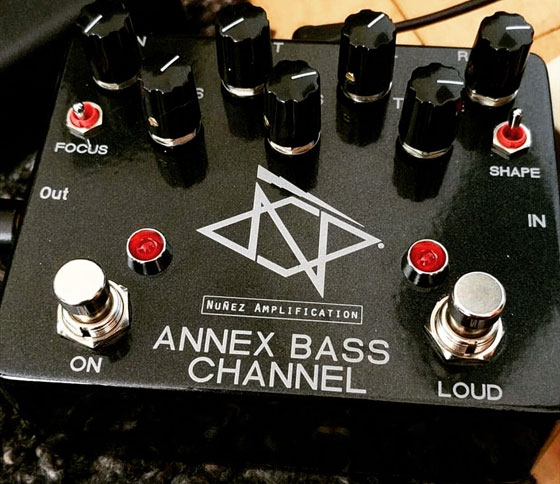
That’s interesting. I didn’t realize you made pedals too! I assume you use the amps you build but which amps are you currently using in Torche?
For Torche, we’re using amps that my company makes. They’re the Nuñez Amps Annex MKII heads. The reason it’s an MKII is because there are two channels. On the front panel, to the left there are one set of controls and to the right are another set of controls. Each one of those channels is its own head. So its two amps in one box. We manage to get 130 watt power section that is fed by two separate amps and they can be played at once. So technically we are playing 2 heads at once in a 46 pound box. It has a surreal low end.
We got to tour with these amps for seven months supporting our last record. People were coming up to us and were like ‘holy shit’ because there’s a clarity and depth. If you hear bands back to back and let’s say one band is using a Class D or non-discrete gear, and another band is using all Class A or B discrete gear. It’s a sound that you can hear and feel. For example, we played in Chicago Music Exchange basement and people were like ‘whoa’, we believe this equipment has something unique to it. A lot of people think we were recycling circuits, which people do and that’s cool, but for me going from bass to guitar, I was unimpressed with what was available. I had a bass sound that was very, for lack of a better word, physical sounding. I honed that bass sound in on over the years and then to go to guitar and just not have that feeling anymore.
We got to tour with these amps [Nuñez Amps Annex MKII] for seven months supporting our last record. People were coming up to us and were like ‘holy shit’ because there’s a clarity and depth…
That’s what set it all off. I had this Frankenstein head I was working on and it wasn’t there sonically. Along with my partner, Gary Phillips, we really dove in and provided people with way more than you would ever need. By doing this, let’s say if you play outside, you just turn the nob up a little bit, as opposed to realizing, my sound is hollow on this outdoor stage. We always give people more so that you can dial in what you need, when you need it.
In Torche, we use those heads into two cabinets each. We have both amps on at all times. Both channels playing together perfectly in phase. On high power they’re 130 Watts. You can also switch to low power. Depending on what the customer wants, we can do anywhere from 60 watts to .5 watt. We use a variety of design techniques which may vary from the norm, because when you build Class A lower wattage amp, unfortunately, designs will incinerate your tubes and really wear out your amp. You have to spend money on tubes continuously.
As working musicians (we used to be touring musicians and hope to again one day [laughs]), we looked into different ways of designing amps. We’re recording engineers and both play bass so that means we’re on both sides of the fence with understanding how things work. We don’t just say this looks good on paper let’s build it. We have very different backgrounds and tastes as well and we also have other people play different styles of music. It’s such a unique line of products, so they tend to work for all sorts of music.
I do need to demo the products more, but, I have a YouTube channel and on Instagram I have clips and videos that I’ve done to showcase the sound. It’s really fun playing the gear live because the other bands, and their techs, were checking out the amps and asking plenty of questions. So we used the MKII heads live last tour, and for bass we used my Ampeg SVT. We do run the Annex Bass Channel into custom cabinets.
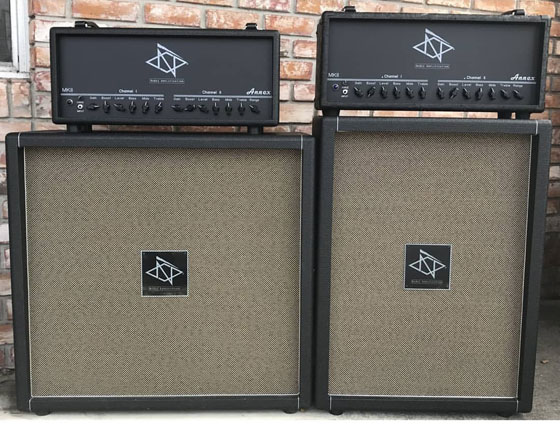
I saw you guys live at the Orange Peel. It was an epic show! I was standing right up front and got to see your set up. I noticed when you set up your pedalboard, you put a separate pedal off to the side. I was curious what that was?
So the pedal I took out separate on the side is a Boss Loop Pedal. I forget if it’s the RC5 or something. Basically, I use that because, there are parts in some songs that I need to loop something. For instance, on the song Admission, the way it was recorded, I would really want this ambient, shrapnel vacuum cleaner sound that’s swirling to be there. The main lick of the song doesn’t stop, especially at the end where those other layers come in.
I was wondering how I could accomplish that live, so I decided to try out a loop pedal. It brings the song much closer to the sound on the record with the exception of one more overdub at the ending. It’s a small mood thing that brings in the ending, but, that would be insane to have two different loops. I’m not there yet [laughs]. We might just come back from the solo, play the main lick for the song, then the end grows a little bit, gets louder and I’ll hit that pedal you saw to the right of the pedalboard. It’s that wailing/siren part at the end of Admission. I love that part.
I mean getting to the solos, and all that, was something new for me, even though I’d played leads licks, solos and even guitar rhythm overdubs on almost all our records. It’s different live because it’s at the forefront, it IS the solo. As fun as that is, I really love hitting that loop pedal because it creates more sound. I can hear it panning and echoing in the club and it elevates the feeling of the song.
I use a loop one other time on inferno. It’s a weird noise reverse reverb sound that I could play but, I actually chose to put it on a loop as a sample because it allows me to cut out my guitar, then come back in extra heavy after. It’s more effective and powerful and also saves one to three pedals from being on my board. That’s one thing when I chose my pedalboard, I definitely wanted to stay true to the sounds on the record, but, at a certain point I’m not trying to have a pedal board that’s as tall as I am if you stand it up on its side [laughs].
The pedals that are always in my chain are a Boss T3 Tuner, which goes into a Nuñez Amps Tetra-Fet Drive pedal that goes into our Dual Range Boost…
I was lucky enough to be able to consolidate, while using some pedals which were used on the record. I didn’t want to go to big. I think my pedal board is an average 24×12 or 24×14 type of setup. It’s not too huge, l like it to be organized and effective. If shit goes south, I don’t want to be in a position where I don’t know where to begin. I have an effects loop bypasser, I like to keep my sound with full bandwith and as powerful and clear as possible.
The pedals that are always in my chain are a Boss T3 Tuner, which goes into a Nuñez Amps Tetra-Fet Drive pedal that goes into our Dual Range Boost, which is a Class A discrete 30 DB boost. I’m only using it a little bit man, those have a lot of fire and I only need a little bit. We’re a loud band but I like to have dynamic’s, so I get louder for certain parts. Instead of being flat, I like to allow it to grow and it heightens the feeling for you and the crowd.
From that dual boost, I then, feed that into a true bypass effect switcher. When it’s not on, my sound goes into that little box, that’s the Switcher and it goes right into the amp. It has the input and output, an effects input and an effects output, that feeds my effects pedals.
Starting from right to left is an Earthquaker Devices Arpanoid. That gives me an alternate sound to a whammy and adds some fullness and octave type effects to the leads. That will feed into a MXR 95 Mini and then from there it was going into a Catalinbread Echorec for pretty much all the touring we did and was on the record as well, but, I’ve been messing with a MXR Carbon Copy and I feel I can hear the benefits of that circuit and I do believe it’s all analog delay.
So from there it’s fed into another delay reverb which is the Earthquaker Devices Avalanche Run. That one saved me some space on the pedalboard as well, because that one is a delay and reverb. It follows a delay, but it has this glaze sound, making a dreamy or ethereal sound if I need it. It also gives me more sustain. It can make the sound more dense or more record like for certain parts. After that, I have another Tetra-Fet.
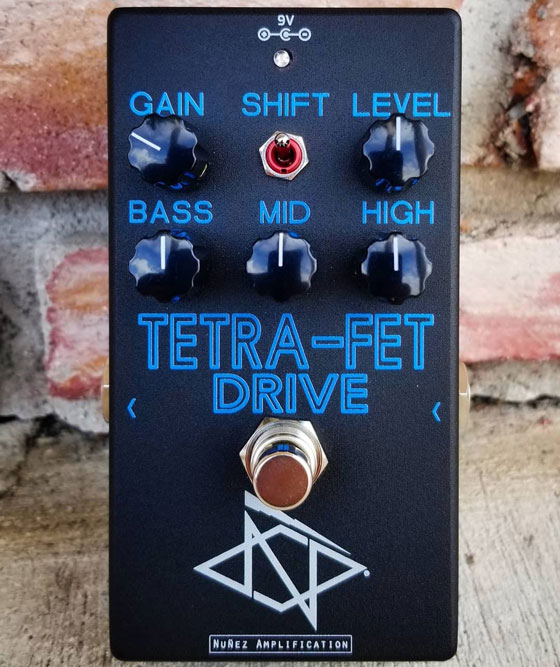
Oh Wow! Two Tetra-Fets. That’s cool.
Yeah right, on that one the gain is set very low. It’s used more as an EQ and I’m basically making a call A discrete sandwich. Before it goes into the effects loop, I have a Tetra-Fet. From there its goes into the effects chain which has a variety of components and electronics. So what I need to bring it back up, secure the quality and make it have more continuity with my dry signal when I’m playing non effected, that’s where the second Tetra-Fet comes in. It’s becoming Class A discrete again, electronic and component wise, and it fills it up and makes it on par with my drive sound.
Right after my second Tetra-Fet is a Hardwire, I think it’s called the DL2. It’s a delay that has looping capabilities. That is set to just looping, so in some parts, like in Time’s Missing for example, I’ll lay down a foundation for a lead, or swell, or something and then I’ll just keep looping on top of it. Sometimes it’s a matter of one note that I’ll loop to do a solo over. On Extremes Of Consciousness, there’s a lead before the ending that drones a little bit. I play on it and then I cut it out when I hit that effects bypass. It becomes real quiet when I hit that switch. Then BOOM, I come back in with the rhythm so it allows me to disconnect.
That’s pretty much the entire pedalboard. The board itself is a nice Gator and its all aluminum. I have the Voodoo Lab Pedal Power too. It’s isolated power, so it’s a quiet, clean power and a good design. The pedal board goes right into the amp head discussed earlier. Then it’s into the cabinets. I have the two 4×12. I call them 412 VLS also by Nuñez Amps. In the top cab, I have Scumback speakers, the BM55 and J55. Then the bottom cab has V30s. One is a bit smoother, yet, still raunchy and rich and the other one is a bit more raunchy and throaty.
I’ve noticed you have some pretty cool guitars. Can you tell me a little more about the guitars you’re using?
The main guitar when I switched over was a Dunable Cyclops. I came home from a tour, borrowed some money from my girlfriend at the time because I needed to buy guitar, and I’m like I’ll have the money, just not four days before our next tour, where I just became a guitar player. So she helped me out, I sold a couple of things and put the money together to get a Les Paul Custom that I found on Craigslist. I thought alright this is the one! It has to be the one. I don’t know, it just felt small because of the scaling, sometimes certain things didn’t sound too in tune to me. So, I ended up wiping that sucker down every night because I knew it wasn’t sticking around. I kept it really clean [laughs]. Once I got home, I was living in LA at the time, I sold it on Craigslist, right where it came from.
I went over and played the guitar [Dunable Cyclops], instantly it was a home run, I thought ‘holy shit, I love this thing’…
Just by chance Sacha over at Dunable invited me over to his shop in Glendale. He said he had this guitar and asked if I’d be interested in checking it out. I said sure, I’m actually having a hard time finding something I feel comfortable with coming from bass guitar. So, I went over and played the guitar, instantly it was a home run, I thought ‘holy shit, I love this thing’. I was playing it and thinking what the situation will be as far as payments. I sold my Les Paul but paid back the money I owed, and had a limited budget especially between tours and securing my bills.
Sacha asked if I liked the guitar. I said yes and he said ‘well for some reason this guitar hasn’t sold and if you’re working, I understand the struggle. You can take it and try it out and see if you like it.’ That’s basically how I ended up with the Cyclops. I took it and I shared a lot of love with it. I recorded the record with that guitar and I’ll never get rid of that thing. I love it and Sacha’s a great guy. I actually recently got another Cyclops that has a mastery bridge so I can do all the bendy stuff that I’ve been doing a lot of lately.
I have a custom Mosrite guitar, mahogany body with Bill Lawrence pickups. All the guitars have a Bill Lawrence pickups, but, I think moving forward I’m going to try different things. I love the Bill Lawrence L500L because it has a high output, but, it retains the articulation, the body and the fullness of the sound. Some pickups get real hot output but sometimes it’s too much, for me anyway. I feel you lose like the low end and the fullness of the guitar with some pickups. The Mosrite is made by Joe at Koontz Custom Guitars. It has the Robot Graves aluminum neck and Joe just made that thing fucking awesome. I use that one extensively on the tours that we did and the CME Sessions. It also has a mastery guitar bridge. That’s what started the whole mastery thing.
On the record, I did some stuff with a tremolo bar on a friend’s G&L, but, it only worked because the strings were for leads. I wasn’t using the lower strings but, I needed to incorporate the low tuning with the high strings and whammy. Luckily, Joe made that killer guitar and it’s called the Maverick now. You can probably find it on Koontz Guitars Instagram. It’s such a cool guitar.
For the bomb string stuff, Fender was nice enough to send me a Mexican Telecaster with dual humbuckers and I have a Lace Nitro Hemi in there. Those have been pretty much the main guitars I’ve been using on the tours, such as, the CME Sessions, Live In The K-Pit and Part Time Punks Session. The CME and Part Time Punks Sessions are on the live LP that we’re self-releasing.
We have a much more hands-on approach now. We will be hand printing the stamps on the covers. We will be printing specific merch bundles ourselves at the shop. I mixed it and recorded it with a friend at CME. It’s not that we were ever uninvolved, but, definitely much more so now. We’re having fun with everything that, in the past we have had other people do for us, especially in a time where it can really help us financially. It also helps to be more attached and in tune with what we’ve created.
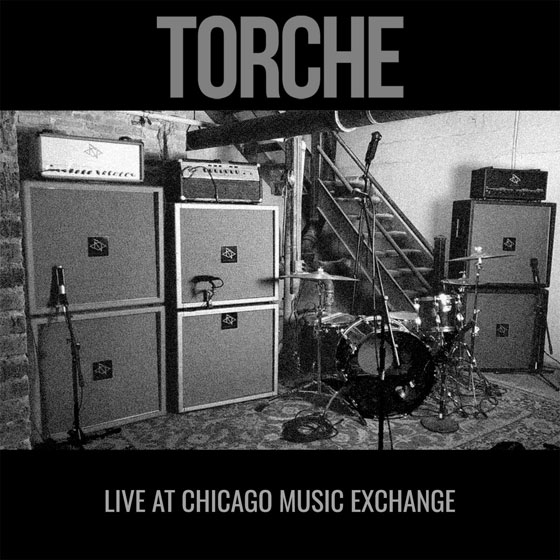
What is your writing process like? Do you guys vary your writing style from record to record?
The writing process switches from song to song sometimes. I feel Eric and I are more into preparing songs prior to entering the studio. We like to map out demos with a drum sequence and then lay over the guitars, bass, etc. With that being said, I do find that sometimes songs come together nicely in person and there’s a certain sporadic energy strike. Those are the ones that have this extra magic because they’re so new and fresh and no one saw it coming.
For the new material, I would say the first song was written in between the last US tour we did and going over to the UK to do the BBC sessions. This was just before playing our first two shows in Russia and then abruptly coming home after playing one show in Greece last March. In between the US and UK tour, we wrote one song, maybe two, I found the demo of it but I think we just completely forgot about the other one. I’ll have to pull that song up again.
That’s very much the driving force behind writing, to create a song that feels good for everybody in the band…
There’s one we wrote together, there’s one that Eric wrote and then there’s one that I wrote. So that’s where we are so far with the three songs currently. We will change the arrangements and add parts also. For example, someone may add a solo, or the drum beat will change a little, but there’s very much an interest to get the best version of the song, as opposed to, getting brownie points for writing the song. We strive to create a great song and if we bring in a song and it transforms as we play, well, that may be for the best.
That’s very much the driving force behind writing, to create a song that feels good for everybody in the band, it’s exciting to listen to and play a lot in the future. I think every record is a reflection of what we want to be doing and that’s also a reflection of what we did on previous records. We might stray down a different path, or have a different kind of approach to the older material.
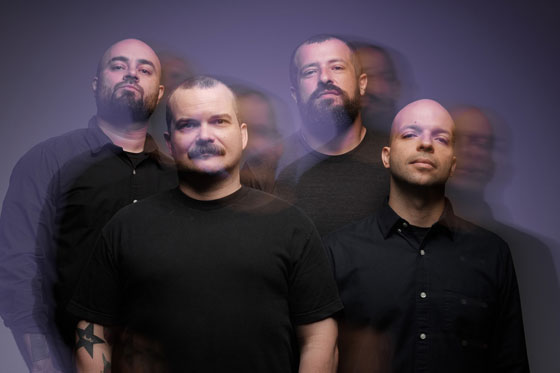
With so much music created daily and a finite amount notes and chords, how do you continue to make unique music without repeating yourself or others?
Sometimes a riff or idea may pop up where we think ‘Whoa, too similar’ but, I think we’re very conscious of that. We all listen to a lot of different types of music as well and maybe that’s fuelling new ideas. We also don’t want to be playing the same things over and over. You’ll have a signature sound and think that’s familiar because that’s them, that’s their sound. I could see them doing this or that. I personally feel like if you listen to each record they all have their own thing going on.
Definitely, each album is unique.
I’d like to continue that and I think we can’t help but do that. There may be something’s that may be homage to a previous song or album, but, it’s never going to be the same riff. We instinctively stray from writing the same record again and again.
As a guitar player, I find I have more off days that on. I will typically get frustrated and stop playing for a few days. What do you to inspire yourself to play again after having an off day?
Welcome to the club [laughs]. What works for me is setting up a drum sequence, I use a program called EZdrummer, I’ll write to a beat that excites me, inspires me or challenges me. The other thing that’s fun and seeing as I have a loop pedal in my pedal chain, I’ll turn on some delays and come up with some sort of lead, or lick and then loop it, I’ll then attempt to play riffs over it. That puts you in a position where you’re trying to accommodate this new lead, at least, key wise and you can explore different riffs. Essentially, flip it on its head, where a lot of people tend to write the rhythm and then do the lead.
For example, the song Admission came out of frustration. I was sick, we just came back from Eastern Europe and I had a cold, I was hot, uncomfortable, sick and missing home. I decided I wanted to write because I needed to be preoccupied and creative, so I started playing and playing. I had maybe two other demos and it was on a little four track app that actually had a drum machine. I set up a drumbeat arrangement that was different than beats we’ve used in the past. I decided that I was going to do these dance type drum beats, almost like Depeche Mode or some shit [laughs]. I thought ‘OK this is different’ and started playing some rhythms.
What works for me is setting up a drum sequence, I use a program called EZdrummer, I’ll write to a beat that excites me, inspires me or challenges me…
I thought I should try a lead first over the drum beat, because the rhythm was going nowhere [laughs]. I was about to stop because I thought this shit sucks. One last try, I put on a delay, had a little practice amp and a fuzz pedal as I was living in California time. All my guitar gear and recording studio was still in the East Coast, so I would bring stuff in batches in my backpack, or buy second hand cheap stuff, like a $90 electric guitar and a small $20-$30 combo amp.
Back to Admission, I was playing and like I said, I was just over the rhythm stuff. I’m like alright, the drum beat is cool and different, so I just sort of messed around with some leads and I kid you not, within a minute or two, BOOM, that lead happened. I just messed around with it because I liked how it sounds dreamy. Then I thought, how do I heighten this feeling I’m getting from these two instruments, the drums and the lead, without ruining it. This would become the foundation for the melody and you’re put into a creative box where you’re searching for the rest of the song. Before you know it, BOMM, the song starts to show itself.
That’s the key for me, not thinking and just letting something happen. It could be the worst shit ever, sometimes it’s the best thing. So the lead happened and I thought ‘whoa, that’s it, don’t touch it’ and I chased it in a sense. It’s cool how you can change the feeling of a part by laying a rhythm under a lead. It’s a challenge to create that rhythm while maintaining the original feeling. That works for me. I even demo it on my phone. I have a bunch of little clips on my of leads and then the rhythm underneath it.
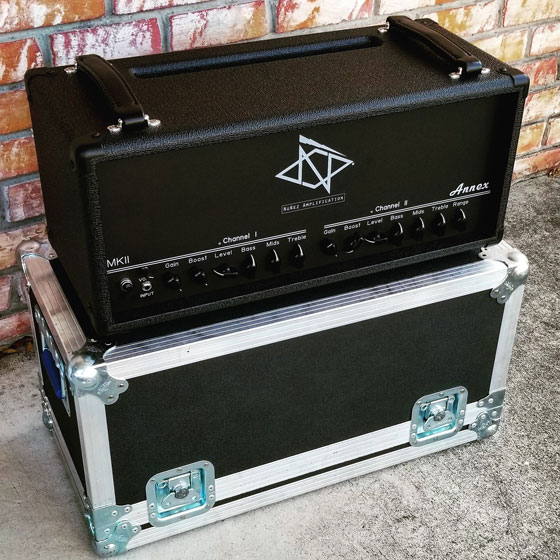
Well that’s awesome. That’s a unique way of thinking. I haven’t thought of it that way.
Yeah man, go try it, it’s a lot of fun and actually, you reminded me, thank you, one thing that I want to turn into a song.
Awesome! I hope it makes it to the album. That would be cool. I will try that out as well.
If you’ve got a delay and an octave going, start playing these leads, and if there’s a rhythm, then cool, if not, just loop it. Then once that loop sequence is done, you play a riff behind it and man it’s amazing how you will end up in frets that you don’t often visit with different rhythm patterns. I’m always leaning towards a stream of conscious type of writing. I think making a little lead, or creating a drum beat and just riffing blindly over it, is exciting to me. I feel like your subconscious is eager to get some stuff out and instinctively trying to make songs better, chasing stuff momentarily for that gratification if something feels good.
Is there a song, or part of a song, that you’re particularly proud of?
I feel like every record has different parts that I’m proud of. Whether it’s a small thing that a song needed and you submit it to the track, then, the rest of the band says ‘man its great!’ For me, I find a lot of joy in making songs more complete. Every song should be an experience. I’m proud of the title track for the last record (Admission). I’m proud of adding parts to all the songs that were written either as a group, or somebody else.
I’m proud of my solos. For whatever reason, I ended up doing all the solos, with the exception of two on the record, that was something new for me and I’m up for the challenge. I’m happy with the songs that I submitted that materialize almost like original form. Admission was very similar to the demo and so is Changes Come. Also, doing all those ambient, dreamy, swell effects in that song, I feel very proud of that type of stuff, because of the emotion created through guitar. It just moves it in such a profound way for me. I’m always excited by making guitars not sound like guitars.
I ended up doing all the solos, with the exception of two on the record, that was something new for me and I’m up for the challenge…
I also liked contributing to all the other songs. For example, the solo in Slide that Eric wrote. He had a nice ending to the solo, but I worked on the main solo. That was fun because it was different. The solo in On The Wire is more a shrapnel, noise rock, type of solo, where in Slide it was more of a solo using the scales. I guess maybe more bluesy.
I’ve never been the type to pick up guitar and play a blues scale. It doesn’t resonate with me. I appreciate blues music and the foundation it set for basically, everything else I love and I’m part of, but, I’m not a Stevie Ray Vaughn type of guy. I’ll appreciate and listen to it now and then. It’s just not how I approach playing guitar. For me, it has to be a little broken and a little fucked up.
I also love submitting a song and having the guys add their parts to make it better. For example, the first song on Admission, From Here. I showed the song to the guys and they were pumped on it. They thought it was definitely an opener. Then Steve [Brooks, guitar and vocals] came with this siren type thing and I immediately loved it. We had this fast, heavy riff and he came with this simple, but effective siren over the top and I love it. It’s exactly what it needed and it’s something that I don’t think a lot of bands would do. It makes the song energetic, anthemic, heavy and dare I say optimistic. Optimistic as in major scale. It has a positive sound. Then here comes this dreamy guitar sound, like a siren. I feel the vocals have a Gary Numan type of approach and a switch up in the middle. I’m very happy with what everyone brought into the last record.
I’m excited, so far with what we’re doing with this new EP. It’s going to be different. It’s already different. It’s exciting because we’re going to record it live as well. At the studio, I’m very grateful that the live room sounds awesome. The drums sound killer. The room is just a nice musical, big sounding room, the symbols are pleasant sounding, which is a huge thing for me. We’ve been working on these demos and I think the next thing is going to be a live recording.
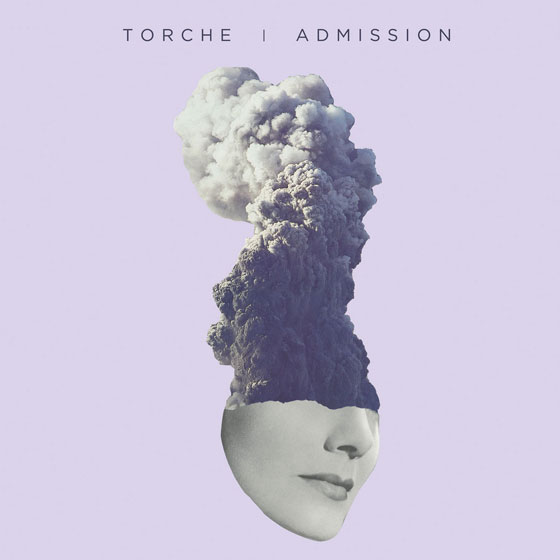
That sounds amazing about the new EP and I’m looking forward to it. I’m glad you guys are continuing recording!
We were thrown for a loop with COVID. We lost a ton of money when that European shows were cancelled. It was a catastrophic amount of money that was lost, but, we’re bouncing back. We’re still recouping and found ways to play to our strengths. We love the band and want it to continue. We’re keeping our heads up and not focusing on the hard times. We’re creating new music and are excited about what is to come.
From the beginning, we’ve been excited to create music and nothing has changed. We’re expanding that to something bigger. We have a recording studio and a print shop at our disposal, and we’re utilizing all of it. It’s easy to fall into like a vicious, negative or non-productive cycle. We want to do the opposite, turn it into a productive cycle. We worked hard to set up the recording studio and print shop. It’s a way for the band to keep going and allow us to be connected to our fans more. It creates a more personal connection and a way for us to interact with anyone who follows our stuff and is into the band.
We’re creating new music and are excited about what is to come…
Well, I’m one of those people for sure. I’m excited for the future of Torche!
We made it through 2020. Now, we are trying to do things different. My initial thoughts with the pandemic and lockdowns were two things. One, I felt people that were selfish, were going to become more apparent and it’s going to be very obvious as it will provide clarity for people, in both business and personal relationships. Two, it’s going to show people what they’re doing with their lives and will see if they want to keep doing what they’re doing or if it’s time for change and improve their lives. It’s no different for our band; we learned how we were doing things and how to change things up for the better.
Thanks Jonathan for taking time out to have, what turned out to be, an in-depth chat, it was an absolute pleasure and I certainly learnt a thing or two, which we hope our dear readers do as well. And to keep up to date with all the goings on with Torche, head over to their website and follow them on social media.
Band Links: Official | Facebook | Bandcamp | Twitter | Instagram
Interviewed by: Josh Schneider
